Main menu
Common skin conditions

NEWS
Join DermNet PRO
Read more
Quick links
Angulated lines dermoscopy — extra information
Angulated lines dermoscopy
Author: Naomi Ashman, Dermoscopist, Torbay Skin, Auckland, New Zealand. DermNet Editor in Chief: Adjunct A/Prof Amanda Oakley, Dermatologist, Hamilton, New Zealand. Copy edited by Gus Mitchell. June 2019.
Introduction
Dermatoscopic findings
Which lesions can be seen via dermoscopy?
Histology
What are angulated lines?
In dermoscopy, angulated lines are straight lines that meet at angles larger than 90 degrees but do not intersect. They may form complete or partial polygonal shapes. They are also known as polygons, rhomboids and zigzag pattern. They are a dermoscopic clue to melanoma.
What do angulated lines look like through the dermatoscope?
Angulated lines are grey-brown lines that are connected at an angle, or coalescing to form polygons.
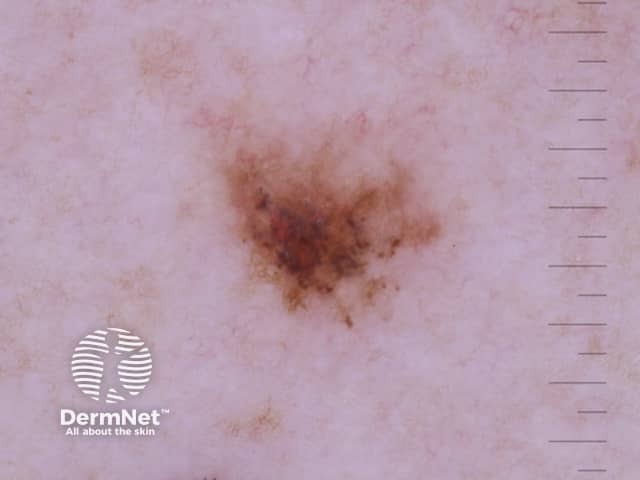
Angulated lines seen on dermoscopy of a small melanoma
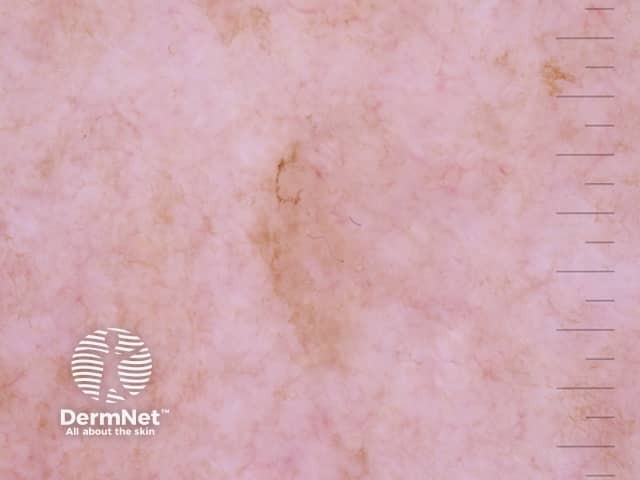
Angulated lines are a clue to otherwise featureless melanoma
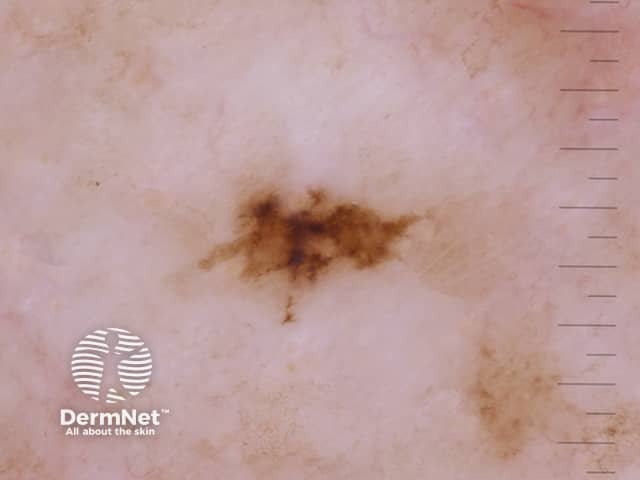
Angulated lines seen on dermoscopy of a small melanoma
In which lesions are angulated lines seen through the dermatoscope?
Angulated lines are seen in the following skin lesions:
On the face, angulated lines correspond to rhomboids and are also represented in:
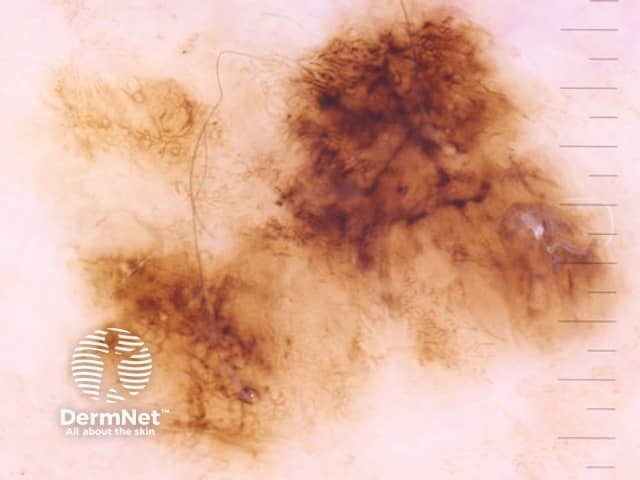
Angulated lines seen on dermoscopy of a melanoma
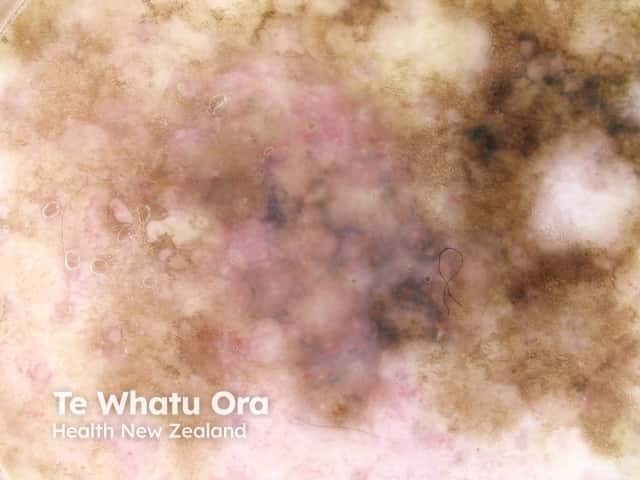
Angulated lines seen on dermoscopy of lentigo maligna
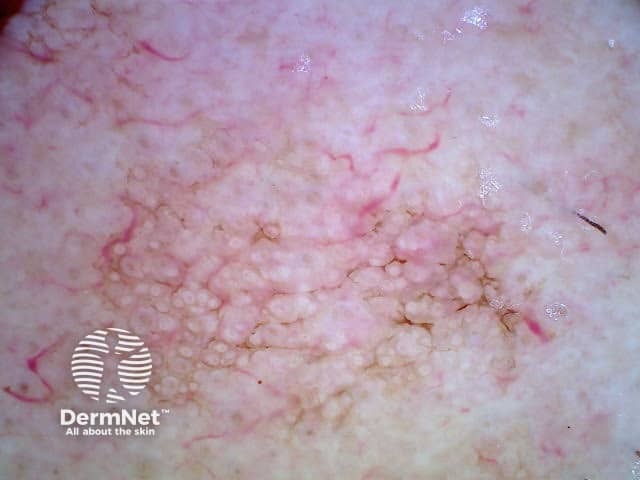
Angulated lines seen on dermoscopy of actinic keratosis
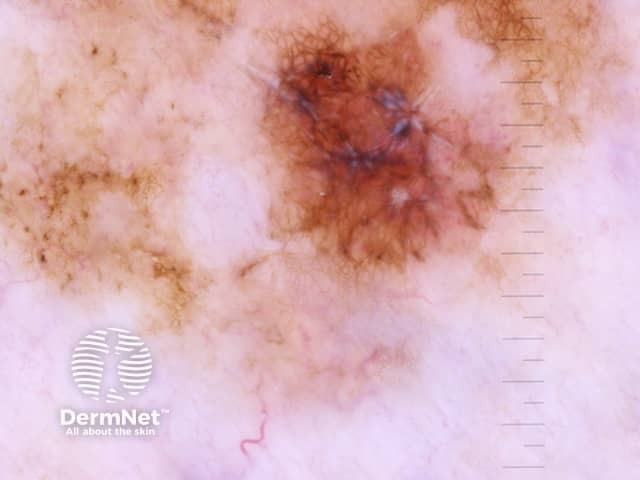
Angulated lines seen on dermoscopy of melanoma
What is the histological explanation of angulated lines?
The precise histology is not clear but likely correlates with an accumulation of inflammatory cells and melanophages in the dermis, underneath the malignant melanocytes residing in the epidermis.
Angulated lines seem to correspond to a flattened dermoepidermal junction (DEJ) with fewer and blunter rete pegs due to a proliferation of atypical melanocytes at the DEJ, as well as a focal accumulation of melanophages in the superficial dermis [1].
References
- Vanden Daelen A, Ferreira I, Marot L, Tromme I. A digital dermoscopy follow-up illustration and a histopathologic correlation for angulated lines in extrafacial lentigo maligna. JAMA Dermatol 2016; 152: 200–3. DOI: 10.1001/jamadermatol.2015.4132. PubMed
- dermoscopedia contributors – Oriol Yélamos, Katrin Kerl, Ralph Braun. Angulated lines [Internet]. dermoscopedia; 2019 May 20 [cited 2019 Jun 6]. Available from: https://dermoscopedia.org/w/index.php?title=Angulated_lines&oldid=15769.
- Dermatoscopy, Pattern analysis of pigmented and non-pigmented lesions by Harold Kittler, Cliff Rosendahl, Alan Cameron, Philip Tschandl; 2nd edition, 2016; Facultas Verlags- und Buchandels AG facultas Universitatsverlag, Vienna, Austria.
On DermNet
- Actinic keratosis dermoscopy
- Rosettes in dermoscopy
- Actinic keratosis dermoscopy images
- Basal cell carcinoma dermoscopy
- Lentigo maligna and lentigo melanoma dermoscopy
- Lentigo maligna and lentigo melanoma dermoscopy images
